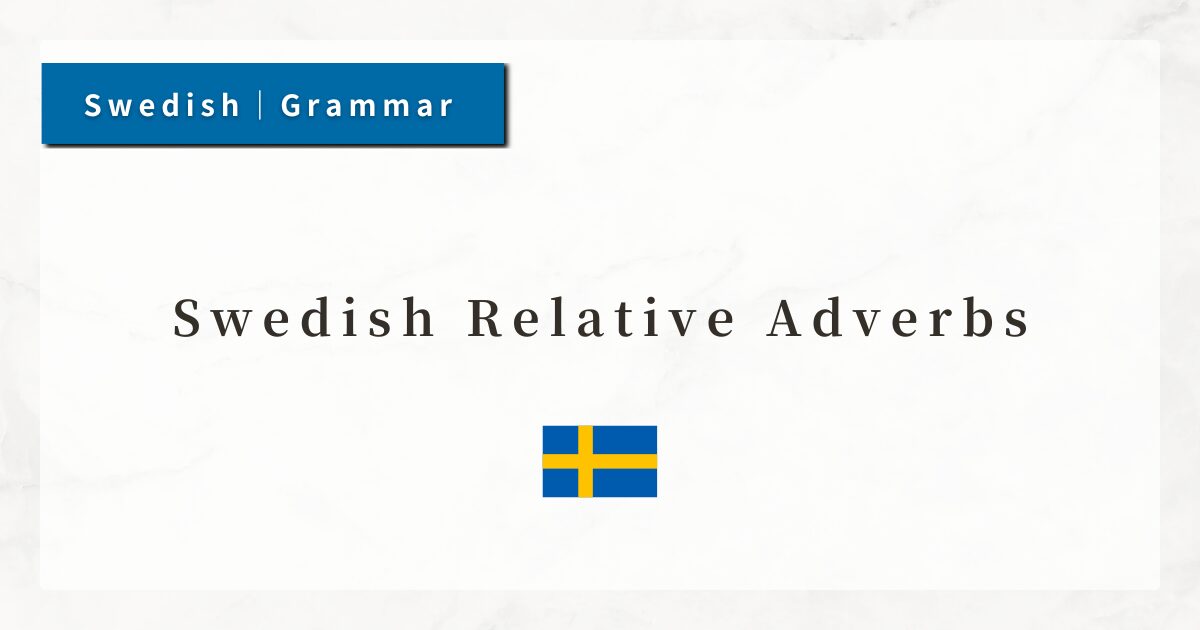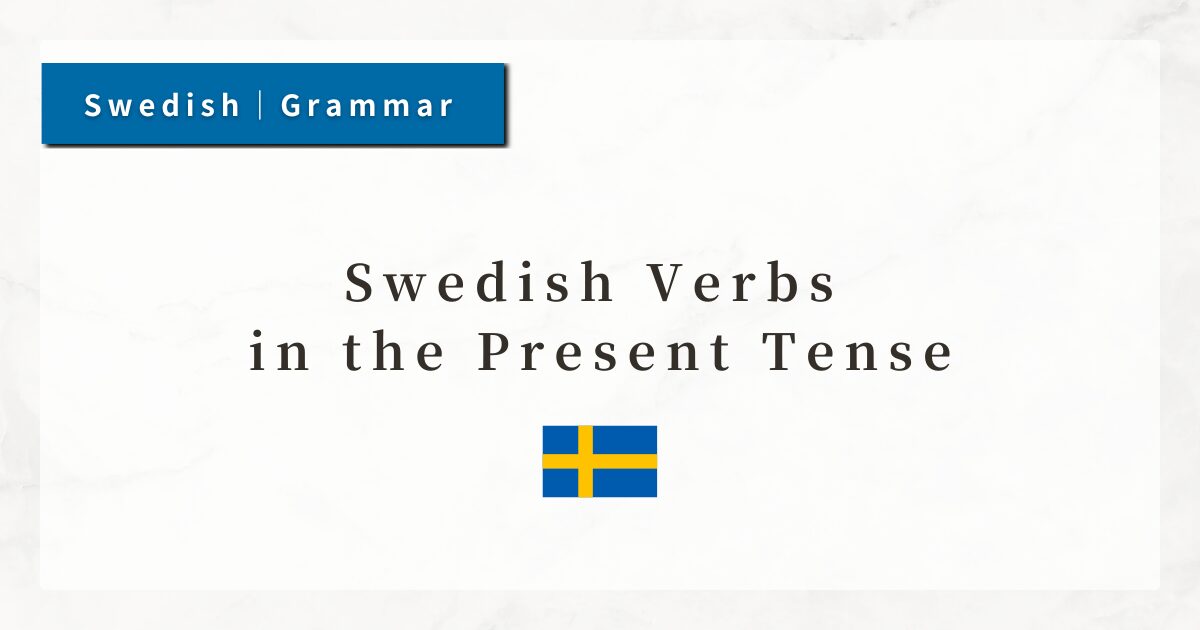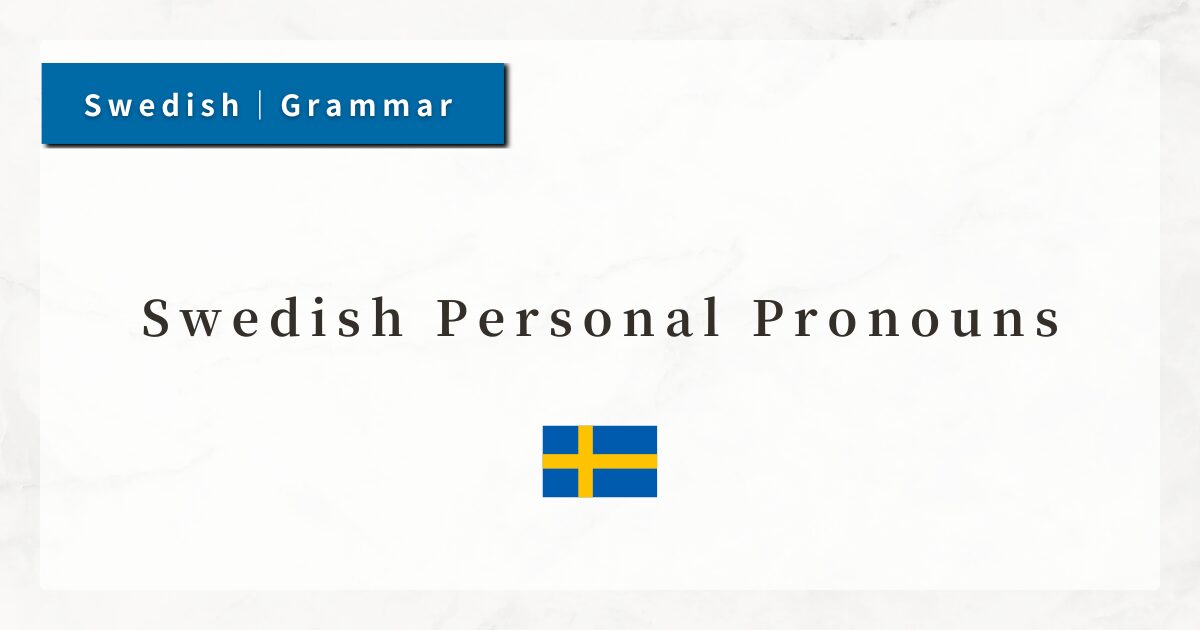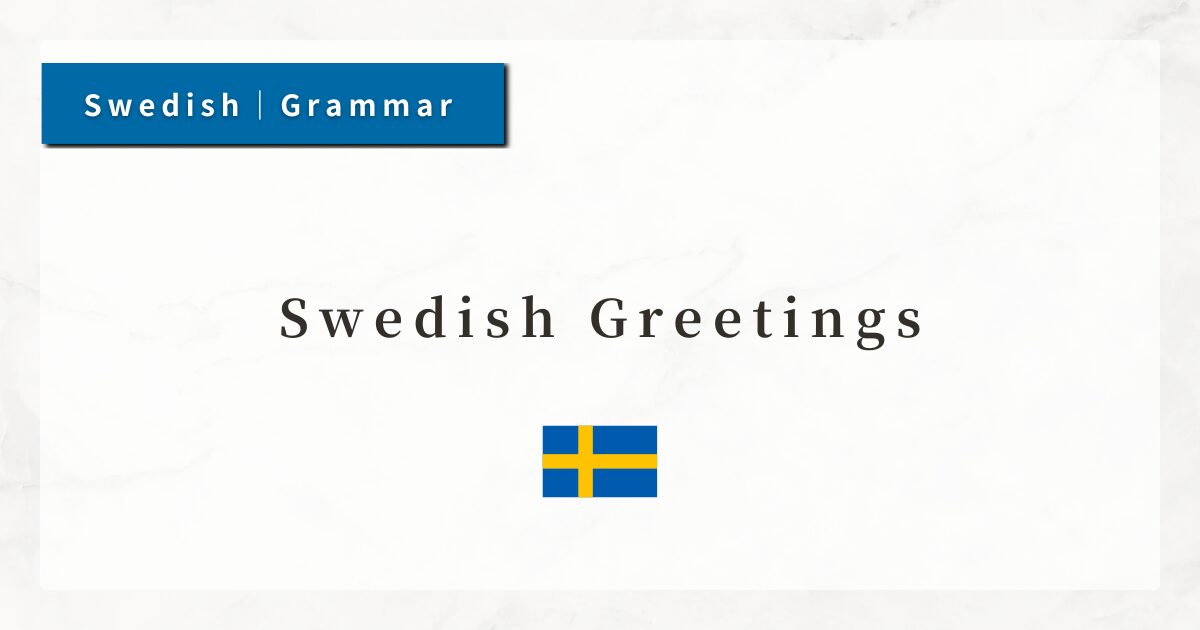#35 Swedish Comparative Adjectives|Rules and Conjugation Guide

In Swedish, the comparative form is used to make comparisons such as “bigger” or “faster.”
This corresponds to English words like bigger or faster, and is formed by changing the endings of adjectives and adverbs.
In this lesson, I will explain how to form and use the comparative form of Swedish adjectives and adverbs, with plenty of examples.
1. Basic Rules of the Comparative
In Swedish, adjectives and adverbs have three degrees of comparison.
| Degree | Example (adjective snabb) | Translation | Explanation |
|---|---|---|---|
| Positive | snabb | fast | The base form, unchanged. |
| Comparative | snabbare | faster | Add -are (or another ending) to express “more … / -er.” |
| Superlative | snabbast | fastest | The form that expresses “the most ….” |
When using the comparative, the conjunction än (“than”) is used to show what is being compared.
2. How to Form the Comparative
There are several ways to form the comparative in Swedish. Below are the main patterns.
2-1. Add -are (most common)
Most adjectives and adverbs form the comparative by adding -are to the base form.
- snabb → snabbare (fast → faster)
- billig → billigare (cheap → cheaper)
- vacker → vackrare (beautiful → more beautiful)
This rule applies widely to adjectives ending in a consonant or short words.
2-2. Words ending in -el, -en, -er : drop -e and add -re
For words ending in -el, -en, or -er, drop the final -e and add -re.
- nobel → noblare (noble → more noble)
- enkel → enklare (simple → simpler)
- vacker → vackrare (beautiful → more beautiful)
Note that spelling changes can occur, as in vacker → vackrare, where both the e is dropped and the stem changes.
2-3. Add -re directly (irregular short words)
Some short adjectives form the comparative with -re, often with a vowel change in the stem. These forms are irregular and need to be memorized.
| Positive | Comparative | Meaning |
|---|---|---|
| hög | högre | higher |
| ung | yngre | younger |
| lång | längre | longer |
| stor | större | bigger |
2-4. Adjectives ending in -isk: use mer / mera
Adjectives ending in -isk (e.g., politisk, logisk) do not change form. Instead, the comparative is formed by placing mer (or mera) before the adjective.
This is similar to English forms like “more logical,” “more political.”
- politisk → mer politisk (more political)
- logisk → mer logisk (more logical)
- typisk → mer typisk (more typical)
Mer is the more common choice, while mera is slightly more colloquial or expressive.
In most cases, mer is preferred, but mera can be used when a softer or more emotional tone is desired.
2-5. Irregular Comparatives
Some adjectives and adverbs form comparatives irregularly, similar to English (good → better, bad → worse). These are common words and should be learned early.
| Positive | Comparative | Meaning |
|---|---|---|
| bra (good) | bättre | better |
| dålig (bad) | sämre | worse |
| mycket (much/many) | mer / mera | more |
| liten (small, little) | mindre | smaller, less |
3. Adverbs Derived from Adjectives
In Swedish, adverbs derived from adjectives take the same comparative form as the adjective.
| Adjective | Adverb | Comparative | Translation |
|---|---|---|---|
| snabb (fast) | snabbt (quickly) | snabbare | faster / more quickly |
| tydlig (clear) | tydligt (clearly) | tydligare | more clearly |
| bra (good) | bra (well) | bättre | better |
Thus, the comparative form is identical for both adjectives and adverbs, and the meaning must be understood from context.
4. Summary
- Most adjectives form the comparative with -are.
- Words ending in -el, -en, -er drop -e and add -re.
- Adjectives ending in -isk form the comparative with mer / mera + adjective.
- Some short adjectives (e.g., hög, lång, ung, stor) form irregular comparatives with -re and vowel changes.
- Irregular comparatives (e.g., bra → bättre) must be memorized.
- Adverbs derived from adjectives use the same comparative form as the adjective (e.g., snabbt → snabbare).




